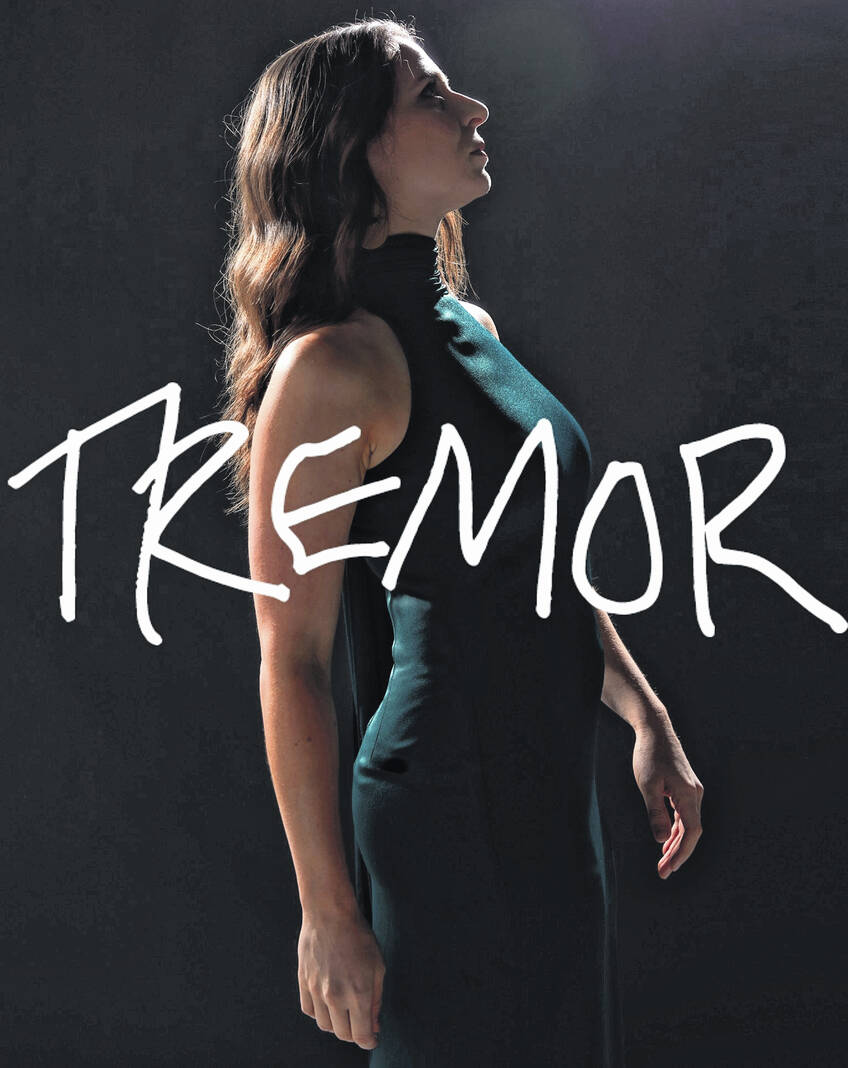
Dr. Brianna Matzke is an associate professor of music at Wilmington College. Her incurable, rhythmic shaking disability is inspiring artists — musical and otherwise — to create components of the next Response Project, which culminates with a concert and art exhibition this spring.
Submitted photo
Dr. Brianna Matzke first recalls her hands involuntarily shaking while in her early 20s attending graduate school in music. She thought it might be the result of too much coffee, a lack of sleep or, maybe, she was nervous about something. It persisted periodically and even worsened some before she was diagnosed at the University of Cincinnati’s Neuroscience Center as having Essential Tremor.
Matzke is an associate professor of music at Wilmington College. Her incurable, rhythmic shaking disability is inspiring artists — musical and otherwise — to create components of the next Response Project, which culminates with a concert and art exhibition this spring.
The Response Project is Matzke’s acclaimed artistic endeavor in Cincinnati over the past 10 years for which she entices artists and composers to “respond” to existing artworks or ideas. Indeed, several years ago, artists composed musical pieces inspired by Bob Dylan’s seminal Highway 61 Revisited album and, more recently, works influenced by composer Pauline Oliveros’ Sonic Meditations.
“It’s the first time I’m getting personal,” she added. “I’m not used to putting myself at the center of what I’m making. That’s what makes it so new — and scary.”
This Response Project, her eighth, will feature her disability, Essential Tremor. Indeed, many of the Response Project artists also identify as having a disability, including one who is legally blind and another who lost the use of her hand. Matzke has come to accept — even embrace — her disability as being a part of herself and her music. Yet, at times, it’s been a bit unnerving.
“Sometimes my hands would shake so I couldn’t write a check,” she said. “I felt like my hands were not my own and I didn’t know why.” That would be troubling for most people, but especially for a professional musician.
“For me, as a pianist, it’s a really scary thing,” she said. “But I came to realize, ‘Well, I play the piano and it’s a part of how I play.’ The tremor is not something that’s broken about me — it’s part of my authenticity as a musician.”
The Response Project will feature two events, a concert on May 5, at 6 p.m., at the American Sign Museum in Cincinnati, with compositions written for Matzke and featuring her on double piano, and an art exhibition at The Well/A Mindful Moment in CampWashington running from April 28 through May 26. The exhibition’s opening reception will be on April 29, from 4 to 8 p.m., with a variety of musical performances at 5:30 p.m. The events are designed to be as sensory-friendly and accessible as possible with Braille program books and audio.
Tickets are available at: https://www.theresponseproject.org/tremor and https://www.concertnova.com/. The art exhibition is free of charge, but people must register, and the concert has a suggested donation of $20.
“I haven’t seen any of the art yet,” she said in early March. ”I know they’ll all do incredible work — I’m excited. I’m amazed at the depth of emotional commitment and how wide-ranging the styles of the compositions are. Every piece is so different.”
Matzke is partnering with Concertnova, Visionaries & Voices, and — to bring visibility to a Central Tremor — the International Tremor Foundation.
“I’ll be taking the projects on tour during my (faculty) sabbatical in the fall,” she added. “Ultimately, I hope this project gives visibility to disabilities and disabled artists, and the opportunity to explore what it means to be comfortable with yourself in a world not prepared to welcome you.”
Matzke said almost everyone has a disability of some form, yet most can successfully compensate and go on living their lives. “My shaking hands is not a big thing in my daily life. I see it as like needing glasses.” She wonders, if suddenly the tremor went away, would she have to relearn her artistry? Indeed, rock band Queen’s lead singer, Freddie Mercury, was reluctant to get his teeth fixed for fear of losing the distinctness of his celebrated voice.
“Classical music is obsessed with virtuosity, superhuman feats. I’m much more interested in authenticity when performing rather than virtuosity,” she said. “I feel I’m making beautiful music through the tremor — it’s part of it.”
Yet, her upcoming performance at which all eyes will be peeled to witness her shaking while performing presents a significant degree of vulnerability, which is something courageous artists embrace in their art.
“It’s difficult to be professional and be perceived as professional and admitting to a perceived flaw all at the same time, Are people going to take me seriously after this?” she said. “I’ve never done anything scarier. But I’m confident and ready to feel that vulnerable.”

